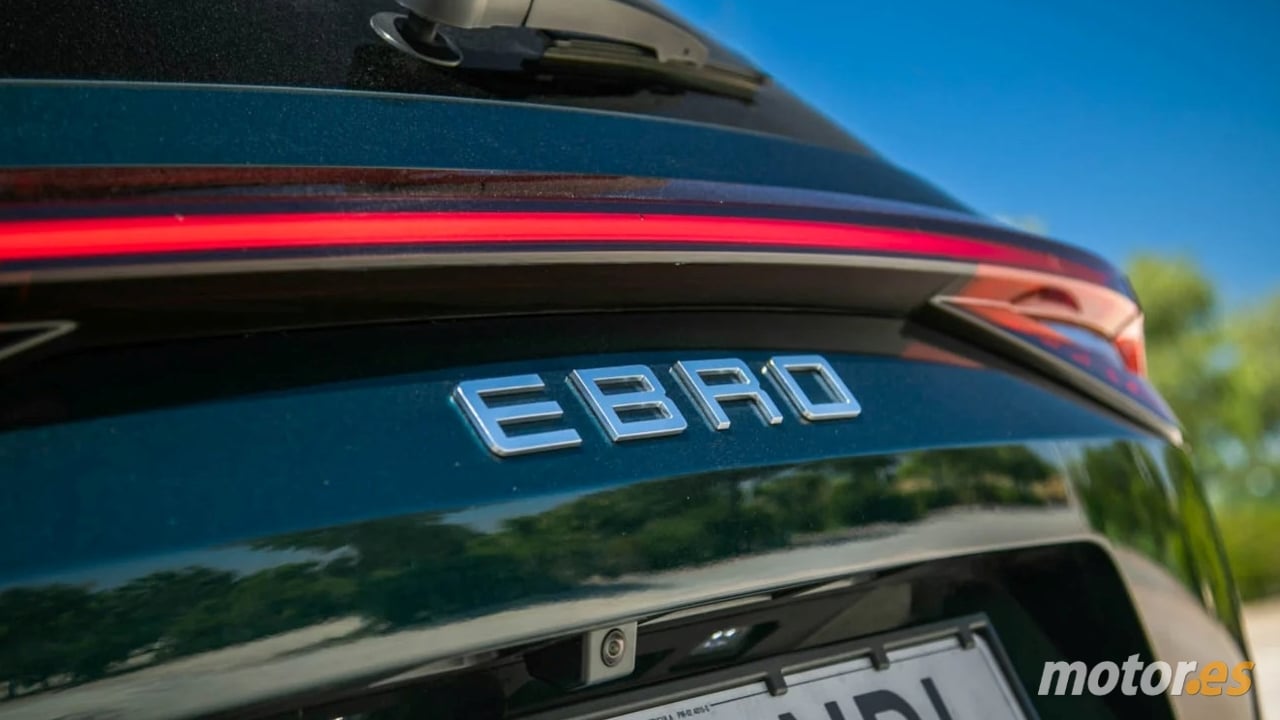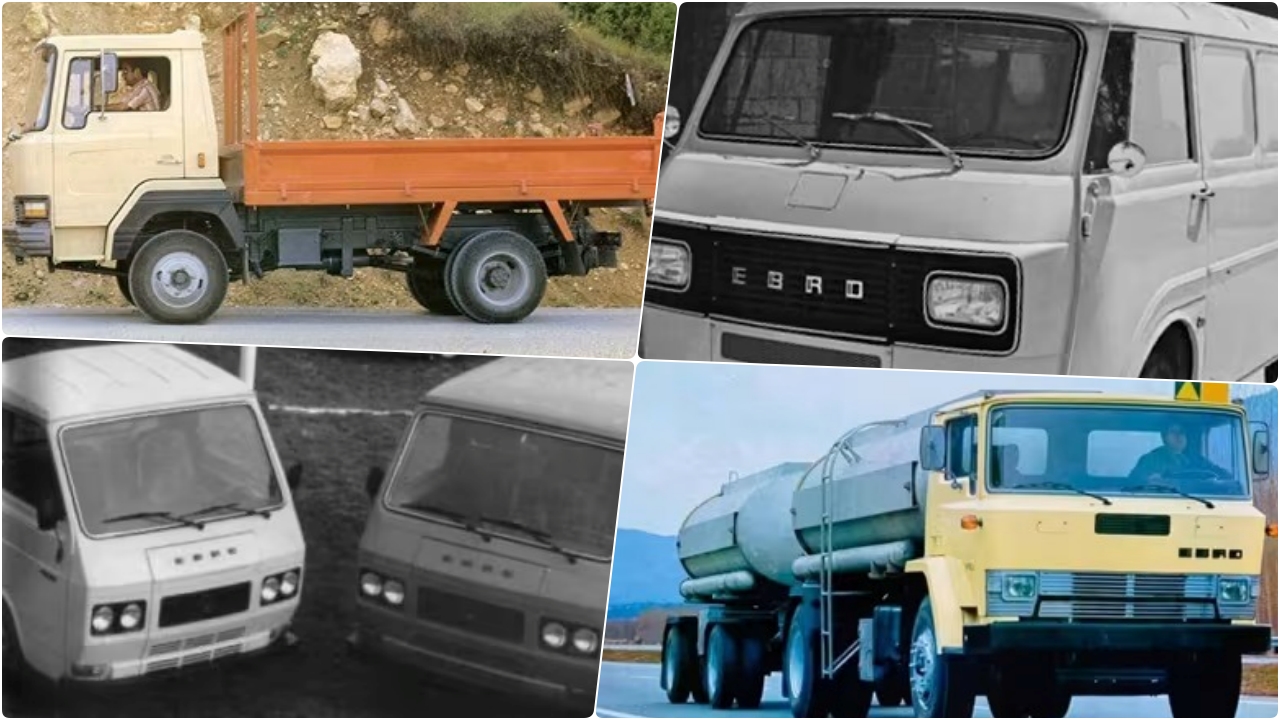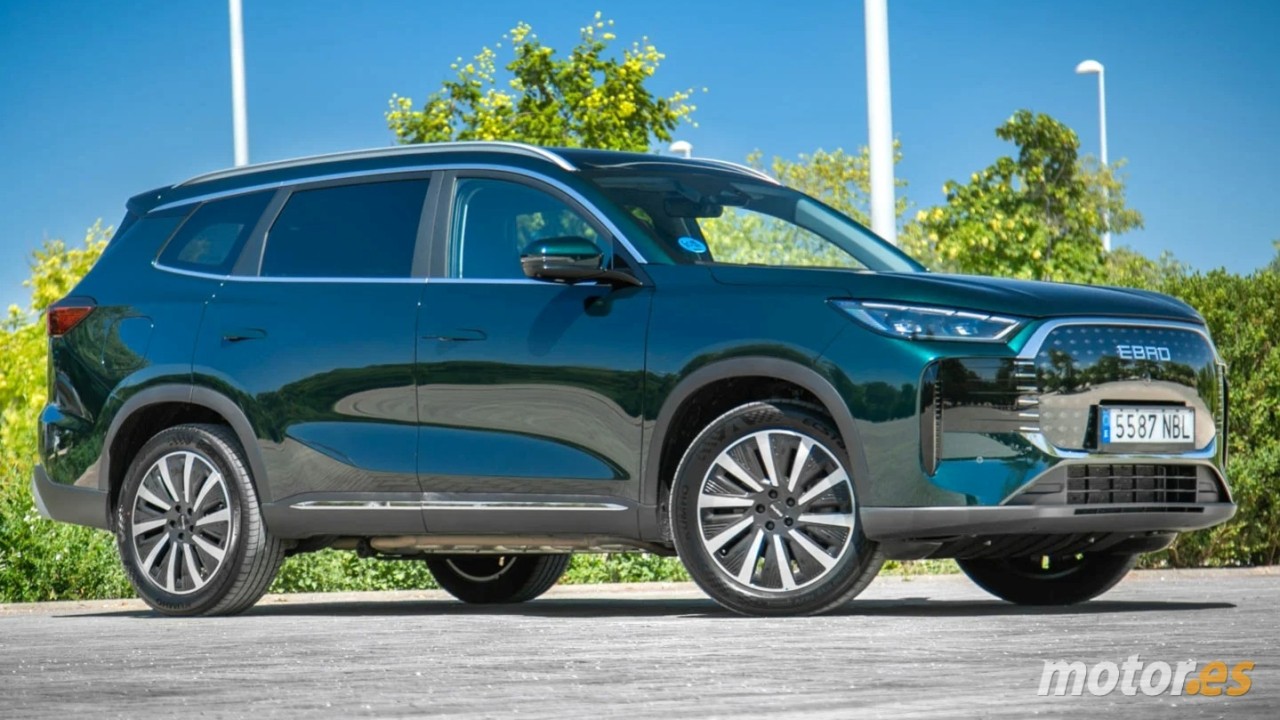EBRO was a historic Spanish brand, who is behind its return?
The historic Spanish brand of trucks and tractors comes back to life after decades of silence. EBRO returns with Chery, aiming to reinvent itself in the electric era without renouncing its industrial legacy.

If you are of a certain age, you surely know EBRO and what its trucks, tractors, and construction machinery have meant for Spanish society. Otherwise, you may only recognize the new cars that have started to be marketed in the market.
The truth is that EBRO is part of Spain in the 20th century, just like Barreiros, Pegaso, and others. In this case, the company created in 1954 by Motor Ibérica S.A. focused on transport vehicles, agricultural machinery, and public works.
For several decades, EBRO consolidated itself in the Spanish automotive industry, but coinciding with Spain's accession to the EEC (European Economic Community), it disappeared. Now, almost four decades later, it has returned.
EBRO does not produce cars from scratch, but assembles CKD kits sent from China
History of EBRO, from Motor Ibérica to industrial myth
The EBRO brand was born in 1952 under the umbrella of Motor Ibérica S.A., heir to the facilities that Ford had in Barcelona. The name, taken from the longest river in Spain, symbolized strength, roots, and progress.
Its first steps were linked to the production of tractors and light trucks based on Ford designs, which allowed the young company to offer reliable products adapted to a country that urgently needed to mechanize.
During the 60s and 70s, EBRO experienced its golden age. Its tractors became protagonists of agricultural modernization, while its trucks populated the roads, workshops, and public works throughout Spain.
Gradually, the catalog diversified with the incorporation of off-road vehicles —such as the Santana EBRO, manufactured under license from Land Rover— and industrial vehicles that consolidated the brand as one of the pillars of national automotive.

The success of EBRO did not go unnoticed. Throughout the 70s, Nissan entered the shareholding of Motor Ibérica, which gradually changed the course of the company. The globalization of the sector and the need for more modern technologies led the Japanese firm to increase its control over the company.
Finally, in 1986, Motor Ibérica was completely absorbed by Nissan following Spain's entry into the EEC, and the EBRO brand disappeared from the catalogs. This marked the end of more than three decades in which EBRO not only motorized fields and roads but also became a symbol of Spanish industrialization.
The rebirth of EBRO in the 21st century
EBRO has spent more than three decades in oblivion, but now it has returned to the scene. Its return is not a simple nostalgic marketing operation, but an industrial project aimed at recovering a historic name in Spanish automotive to put it at the service of electric mobility.
The agreement with Chery
The relaunch of EBRO comes with Chery Automobile, one of the most powerful manufacturers in China with great international projection. Founded in 1997, Chery is known for its rapid expansion and for being a pioneer in the development of electric and hybrid cars, as well as having prestigious subsidiaries like Exeed or Jetour.
The Asian company provides the technology and industrial capacity, while EBRO offers a name with strong roots in Spain and an emotional nod to several generations of drivers and farmers. But, who is really behind EBRO?
After the closure of the Nissan factory in Barcelona, four Spanish companies created EcoPower Automotive to reactivate the plant with an electric pick-up inspired by the Nissan Navara, although the project did not go beyond prototype.
In 2024, now as EV Motors, the company sealed a joint venture with Chery to manufacture in Europe and avoid tariffs. Assembly began in November with a plan for 150,000 units and 400 million investment until 2029.
For now, EBRO does not produce cars from scratch, but assembles CKD kits sent from China, where Chery manufactures the components.
The goal of this alliance is clear: to enter the European market with a brand that generates local trust, taking advantage of the wave of electrification and the need for new players in the sector.
New EBRO models
The rebirth of EBRO does not look to the past, but to the future. The new range focuses on sustainable mobility and electrification, aligning with market trends and the regulatory demands of the European Union.
For now, EBRO offers a total of three models, all of which fall within the SUV segment.
The S400 is a B-SUV presented in May 2025 and designed on the basis of the Chery Tiggo 4. It measures 4.32 meters long and competes with rivals such as the MG ZS, Renault Captur, Mitsubishi ASX, Dacia Duster, or Toyota Yaris Cross. Its engine is based on self-recharging hybrid (HEV) systems with gasoline engines.
The second model is the S700, a C-SUV measuring 4.5 meters long that competes with established models like the KIA Sportage, Hyundai Tucson, SEAT Ateca, Skoda Karoq, or Volkswagen Tiguan, among many others. It has gasoline versions of 147 hp, as well as plug-in hybrid (PHEV) variants of 279 hp.

Finally, the largest model in the range, the S800. In this case, it measures 4.73 meters long and has capacity for a maximum of seven passengers, although there are also five-seater versions.
The EBRO S800 competes with the Nissan X-Trail, Volkswagen Tayron, Skoda Kodiaq, KIA Sorento, or Hyundai Santa Fe, for which it offers the same PHEV and gasoline mechanics as the S700. This allows it to access the DGT 0 label, as it allows up to 90 kilometers of autonomy in 100% electric mode.
The focus is on offering affordable and reliable combustion and electrified cars, capable of competing with already established brands and, at the same time, differentiating themselves thanks to the symbolic value that the name EBRO brings.

